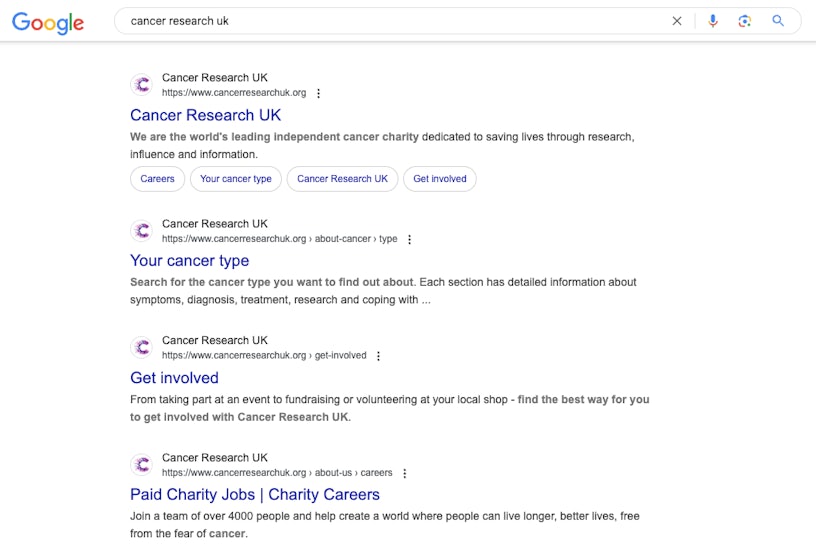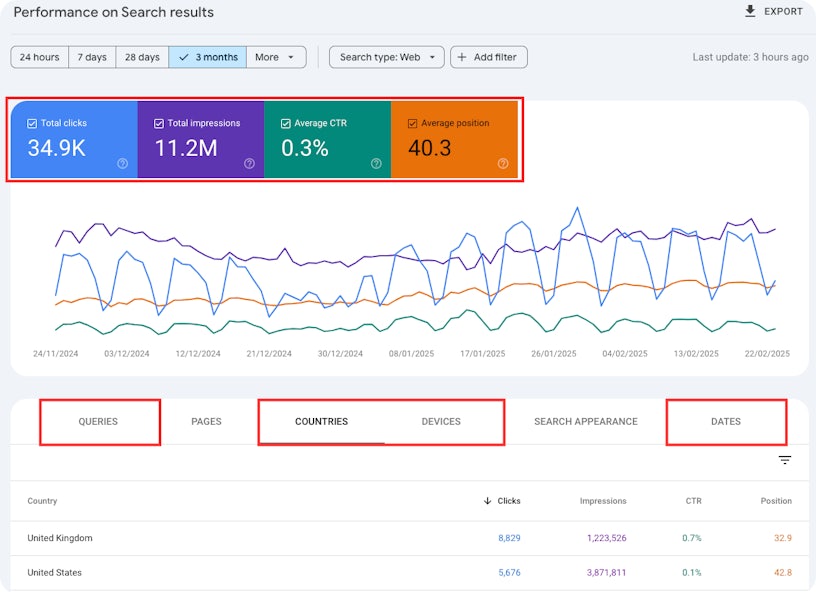Google Search Console (GSC) is an essential tool for understanding how your website is performing in Google Search results. However, there can easily be some confusion when reading the data on the platform. For example, if you add up the number of times people clicked on your site or saw it in search results for different keywords, the total won’t match what Google shows overall. This is because Google Search Console processes and groups data differently, rather than simply adding up individual queries, which can lead to inaccurate conclusions.
To effectively use GSC, it’s crucial to understand the different metrics and how the data is collected and presented. This includes distinguishing between Site and URL reporting, knowing when each is in use, and leveraging automation and dashboarding for deeper insights.

What is the difference between Site and URL reporting?
Site Reporting shows data aggregated by property. This means if you go to the Google Search bar and input a query about a brand, no matter how many pages of that brand you see, their website only gets one ‘Site Impression’.
If multiple pages from the same website appear in search results for a query, Google only counts it as one impression for the entire site. Instead of tracking each page separately, Site Reporting groups all impressions under the website as a whole, giving a broader view of how the brand appears in search.
In the example below, we see at least a few Cancer Research UK landing pages appear on the first page of a SERP. In this case, they only get one site impression for this particular search. This calculation is also applied to other metrics, such as clicks, average position, and click-through rate.

In Google Search Console, Site Reporting appears at the top of the Performance section when no page filters are applied. This means the data shown is for the entire website rather than individual pages. The queries table also uses Site Reporting, but it’s important to note that some search terms won’t be visible due to Google’s privacy policies, which hide certain user data. Other tables that use Site Reporting include Countries, Devices, and Dates, meaning they also show data for the whole site rather than specific pages.

URL Reporting tracks data for individual pages rather than the whole site. This means that each page appearing in search results gets its own impression. For example, if four different Cancer Research UK pages show up in the same search, URL Reporting counts four impressions instead of one. This applies to all key metrics, which are recorded as URL Impressions, URL Clicks, URL CTR, and URL Average Position.

For deeper insights, check the Pages Breakdown Table, which shows performance data for individual URLs. You can also apply page filters to analyse multiple pages based on specific rules. The top results in the table below follow URL Reporting, displaying data for each page separately.

When to use Site or URL reporting?
So, when will you need Site Reporting or URL reporting?
Choosing between Site and URL reporting in Google Search Console (GSC) depends on your specific objectives. Site Reporting provides a holistic view of the whole site’s performance, making it ideal for monitoring overall SEO efforts. If you want to track a website’s performance by queries, countries, or device type, site reporting is available to provide these insights.
On the other hand, if your goal is to optimise specific pages, you should track URL data for those landing pages. By tracking URL data, you gain granular, page-level insights into performance, such as which pages receive the most impressions or clicks, and their average position in search results. This detailed view is particularly beneficial for businesses with diverse product lines, service offerings, or distinct sections they wish to measure independently.






